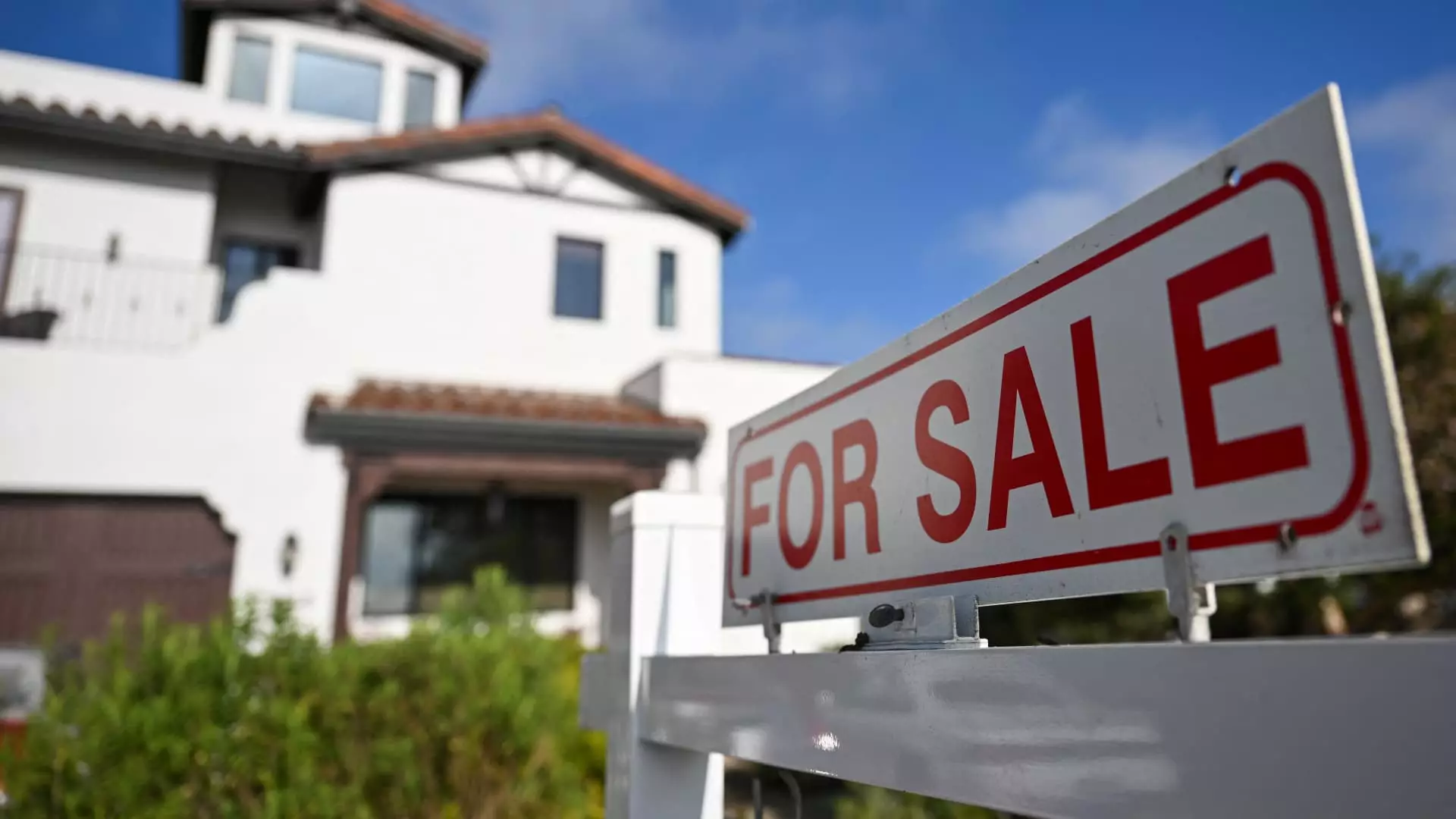Recent fluctuations in mortgage interest rates have led to a tangible decline in both homebuyer enthusiasm and refinancing applications. According to data from the Mortgage Bankers Association, overall mortgage application volume experienced a noteworthy drop of 5.1% last week, signaling a shift in the housing market dynamics. The average interest rate for 30-year fixed-rate mortgages surged to 6.36%, marking the highest rate observed since August and suggesting a challenging environment for potential and current homeowners alike.
The sharp increase in mortgage rates can largely be attributed to stronger economic indicators released recently, including the more robust-than-expected jobs report for September. As noted by Mike Fratantoni, chief economist at the Mortgage Bankers Association, such data often drives investor sentiment, leading to upward movements in mortgage rates. The fact that rates have climbed from 6.14% to 6.36% within a week points to a volatile market that is heavily influenced by economic performance.
Additionally, the increase in points—from 0.61 to 0.62—reflects rising costs associated with borrowing, which can deter individuals from seeking mortgages, especially those looking to refinance in an already competitive market.
Despite the overall downturn in applications, refinancing remains a strong consideration for many homeowners. Applications to refinance dipped by 9% week-on-week, yet they remain 159% higher compared to the same period last year. This contrast in numbers emphasizes the drastic changes the market has undergone; last year, mortgage rates peaked at 131 basis points higher than current levels. Fratantoni highlighted that conventional loan refinances, typically larger in size, are more sensitive to interest rate fluctuations, thus reflecting the greater decline seen in this category.
Meanwhile, the purchasing sector displayed minimal movement, with mortgage applications for homebuying down just 0.1% compared to the previous week. However, it is crucial to note that demand for home purchases is still 8% higher than it was a year ago, suggesting that although rates are elevated, buyers remain somewhat optimistic about entering the market.
Even though current mortgage rates are lower than their previous peaks, they co-exist with rising home prices and limited inventory, particularly on the lower end of the market. This compounded issue creates hurdles for first-time homebuyers and those looking for affordable housing options. Increasing inventory has not yet translated into broader accessibility, demonstrating a disconnect in the market where buyers face higher costs in a constrained environment.
As rates continue to fluctuate weekly, and with additional economic data expected to steer future movements, the trajectory of the mortgage market remains uncertain. Analysts like Matthew Graham from Mortgage News Daily suggest that while recent rapid increases in rates may stabilize, sustained changes to help lower rates will heavily rely on forthcoming economic indicators. The interplay of these factors will ultimately shape the homebuying landscape in the coming months, as potential buyers weigh their options carefully amid rising costs and limited availability.

